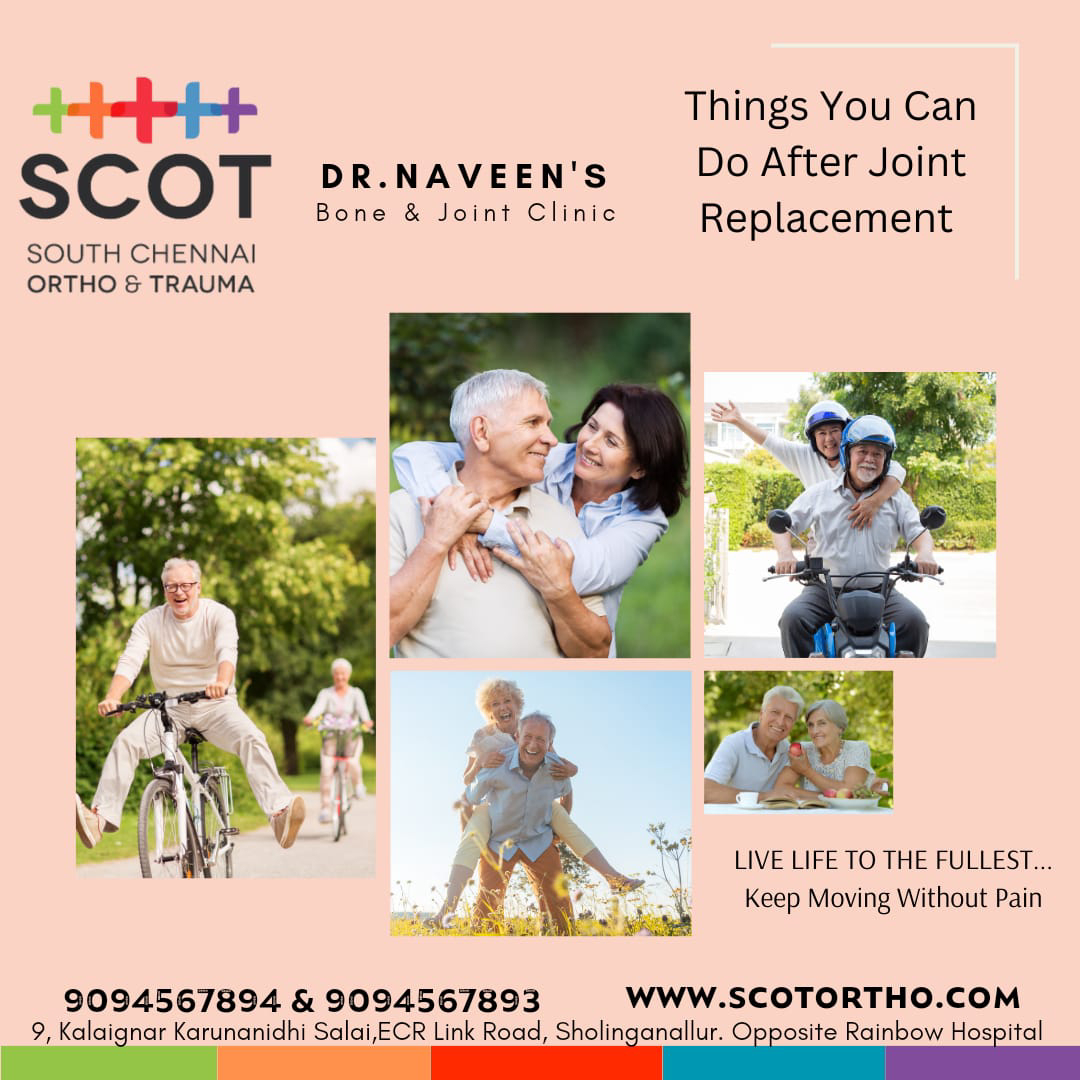After a joint replacement, you'll need to take it easy for a while. But once you're healed up, you'll be able to get back to doing many of the things you love.
Here are some ideas for activities you can do after a joint replacement:
* Go for walks. Walking is a great way to get some exercise without putting too much stress on your new joint. Start with short walks and gradually increase the distance and duration as you get stronger.
* Go swimming. Swimming is another low-impact activity that's easy on your joints. It's also a great way to cool off on a hot day.
* Ride your bike. Biking is a fun and healthy way to get around. Just be careful not to pedal too hard, especially at first.
* Play golf. Golf is a great low-impact activity for people with joint replacements. Just avoid swinging too hard and twisting your knee.
* Do some yoga. Yoga can help you improve your flexibility and range of motion. It can also help you reduce stress and improve your balance.
Of course, you should talk to your doctor or physical therapist before starting any new activity. They can give you specific advice on what's safe for you and how to avoid injuries.
Here are some additional tips for staying active after joint replacement surgery:
* Listen to your body and rest when you need to. Don't push yourself too hard.
* Warm up before exercising and cool down afterwards.
* Use proper form when exercising.
* Wear supportive shoes.
* Avoid uneven surfaces.
With a little planning, you can enjoy an active lifestyle after joint replacement surgery.
SCOT (South Chennai Ortho & Trauma) :Dr.Naveen's Bone & Joint Clinic , Sholinganallur.
Visit : www.ScotOrtho.com
Google Page : Page & Map
Call : 9094567894 , 9094567893
#arthritis #arthroplasty #JointReplacement #pain #osteoarthritis #KneeReplacement #HipReplacement #shoulderreplacement #orthopaedician #movement

Comments
Post a Comment